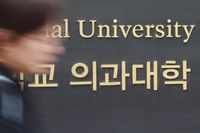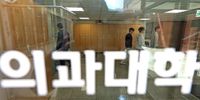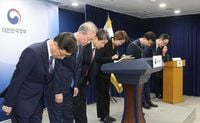The South Korean government announced on April 17, 2025, that it will revert the medical school enrollment quota for 2026 to its previous level of 3,058 students, following a prolonged standoff with medical students and trainee doctors. This decision comes after a year of protests that saw thousands of medical students boycott classes and trainee doctors leave their positions in response to the government's controversial plan to increase admissions by 2,000 students annually starting this year.
Education Minister Lee Ju-ho made the announcement during a press conference at the Seoul Government Complex, where he expressed regret over the turmoil caused by the government's earlier decision. "We sincerely apologize to the public for raising concerns about a potential setback in medical reform," Lee stated, emphasizing that this adjustment would be the "last time" the government would grant such "special measures" for medical students.
The increase in the medical school quota to 5,058 was originally implemented in 2024 as part of efforts to address a shortage of medical services, particularly in rural areas and essential medical disciplines. However, the plan faced fierce opposition, leading to significant disruptions in medical education.
In early March, the government had indicated that it would revert to the former quota if all medical students returned to classes by the end of March. While nearly all students completed their registration or reenrollment procedures, the actual return rate remained low, with only about 25.9 percent of students attending classes as of early April.
The government plans to revise the Enforcement Decree of the Higher Education Act to establish a legal basis for the adjusted medical school enrollment quota. Each university is required to submit its revised admission plan, reflecting the new cap of 3,058 students, to the Korean Council for University Education by the end of April. The final enrollment numbers for each medical school are expected to be announced in late May.
Despite the government’s decision, civic groups, including patient advocacy organizations, have criticized the move. The Korea Severe Disease Association labeled the decision a "fraud against the public," arguing that it undermines the needs of patients who are already suffering due to a lack of medical professionals.
Moreover, concerns are growing regarding a potential "tripling crisis," where students admitted in 2024 and 2025 would have to attend classes alongside those entering in 2026. This scenario could result in more than 10,000 students needing to take first-year courses simultaneously, something that universities have warned is physically impossible.
Deputy Prime Minister Lee emphasized the importance of stabilizing medical education, stating that the government will enforce strict academic policies moving forward. "Some students may be expecting flexible academic policies, but let me be clear: There will be no special measures for medical students," Lee asserted. He warned that students delaying their return could face academic penalties, including being held back a year.
As the government moves to normalize the situation, university leaders are urging students to return to campus. Yang Oh-bong, president of Chonbuk National University, called on students to fulfill their dreams of becoming doctors and emphasized the need for a return to normalcy in medical education.
Lee Jong-tae, chair of the Korean Association of Medical Colleges and Graduate Schools, expressed gratitude for the government's decision but acknowledged that many students remain absent. He stressed the responsibility of medical schools to restore public trust, saying, "Medical education is not merely an academic exercise, but a duty entrusted by society."
Despite the rollback of the quota expansion, questions linger about the future of medical reform in South Korea, particularly in light of the upcoming presidential elections. Some political figures, like Ahn Cheol-soo, have begun to publicly address the issue, advocating for a comprehensive understanding of the challenges facing the medical sector.
As the government seeks to stabilize medical education, it remains to be seen how this decision will impact the ongoing discourse around healthcare reform and how it will influence the political landscape in the lead-up to the elections. With the quota for 2026 now set, the focus will shift towards ensuring that students return to classrooms and that the necessary steps are taken to address the physician shortage in the country.
In conclusion, the government's decision marks a significant moment in the ongoing struggle between medical students and the authorities, highlighting the complexities of healthcare policy in South Korea. As stakeholders navigate these changes, the hope remains that a resolution can be found that satisfies both the educational needs of future doctors and the healthcare demands of the public.






